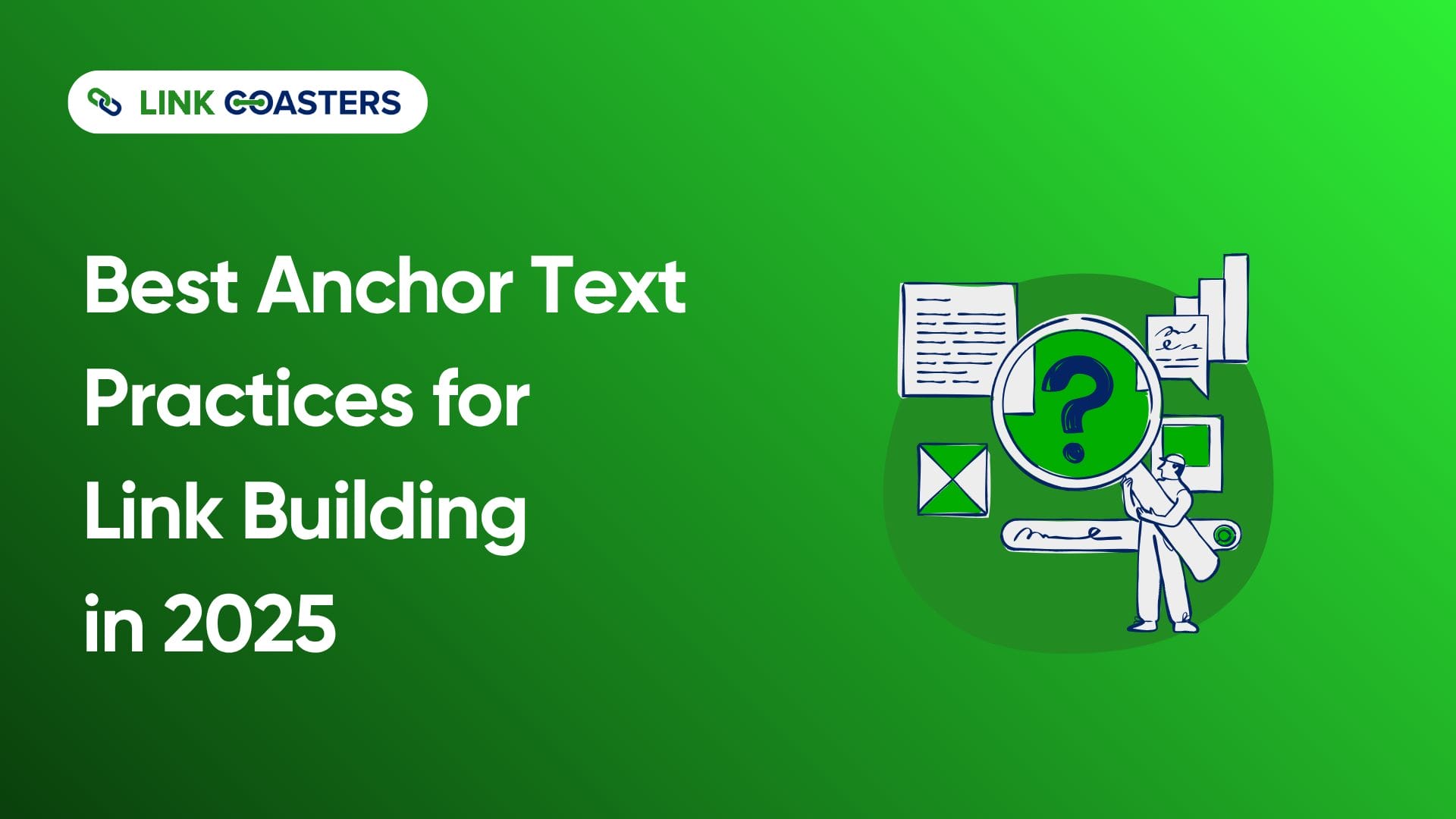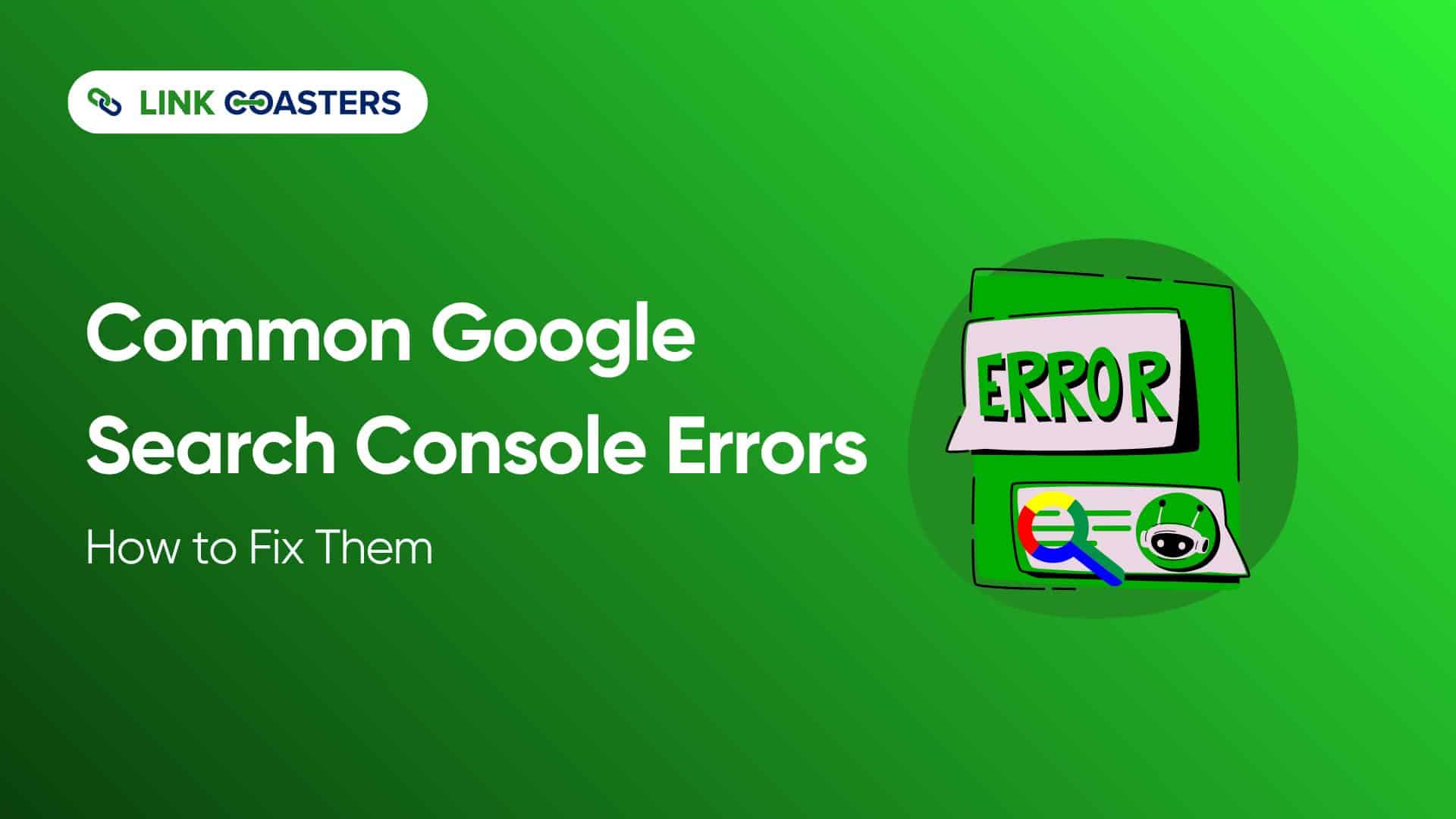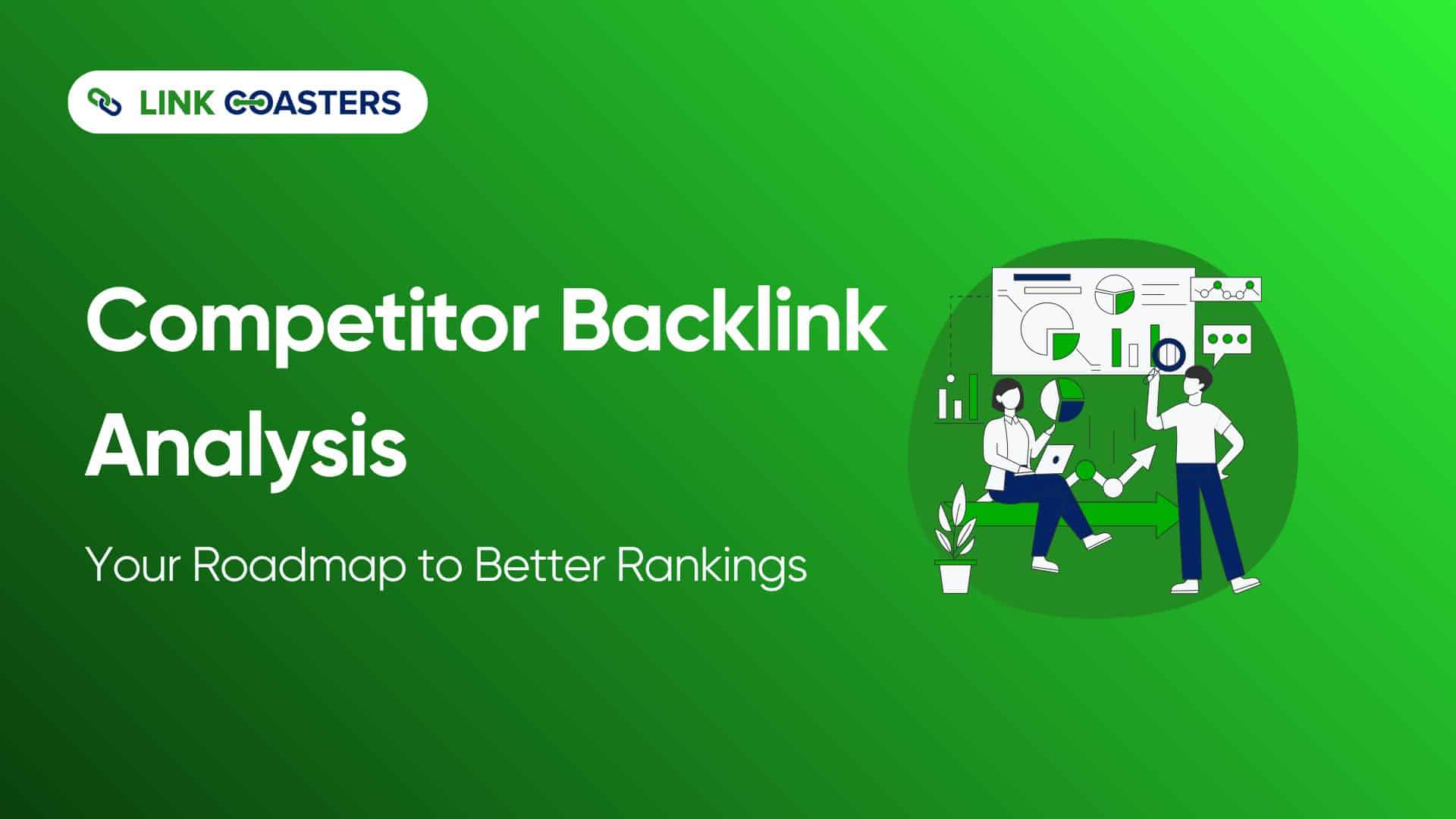Link building is still one of the most effective ways to improve your SEO in 2025. But it’s not just about collecting more links. The anchor text you choose is just as important, and in some cases, it can have an even bigger impact on your rankings.
Anchor text is what connects your content to your readers and to search engines. Use it the right way, and Google will understand your site better. Use it the wrong way, and you could end up with a penalty that tanks your rankings.
In this guide, I’ll break down everything you need to know about anchor text optimization. You’ll learn about the main types, best practices, mistakes to avoid, and some advanced strategies that work right now.
What Is Anchor Text in SEO?
Anchor Text Definition
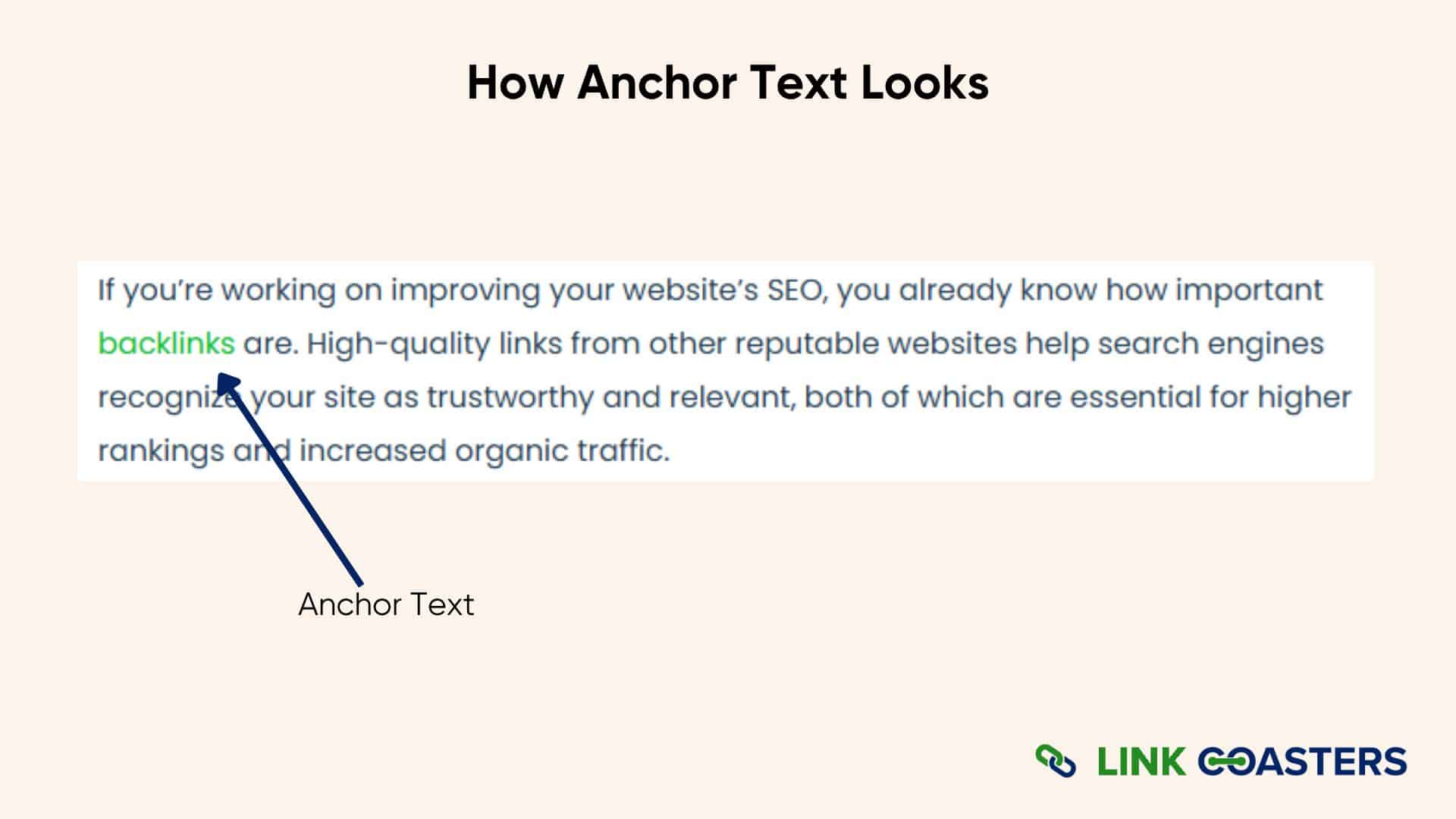
Anchor text is simply the clickable part of a link. It’s the text you see (usually in a different color) that takes you to another page when you click it.
For example, in this sentence: “Learn more about SEO best practices” the phrase “SEO best practices” is the anchor text.
Search engines look at anchor text to figure out what the linked page is about. If lots of sites use similar anchor text to link to your page, Google sees that as a strong sign your page is relevant for those keywords.
How Anchor Text Works in HTML
In HTML code, anchor text appears between the opening and closing anchor tags:
<a href="https://example.com/seo-guide">Complete SEO Guide</a>
In this example, “Complete SEO Guide” is the part your visitors see and click. The href is just the link behind the scenes.
Search engines read this code and connect the anchor text to the linked page. This helps them figure out what your content is about and where it should rank.
Why Is Anchor Text Important for SEO?
1. Anchor Text Shapes How Search Engines Understand Content
Search engines don’t read your content like a person would. They rely on signals like anchor text to figure out what your page is about.
Anchor text provides these crucial signals. When you link to a page about “email marketing tips” using that exact phrase, you tell search engines what the page covers.
When you get several links with similar anchor text, it’s like getting votes of confidence for that topic. The more consistent the signal, the stronger it is.
2. Providing Search Engines with a Topical Signal
Anchor text acts as a content descriptor. It gives search engines context about the linked page before they even crawl it.
It guides search engines in understanding what your site is about and what topic you’re an expert in. If your anchor text is clear and relevant, you’ll usually rank better for your main keywords.
For a complete walkthrough on how to approach SaaS keyword research, check out our dedicated guide.
3. Acts as a Guide for Both Users and Search Engines
Good anchor text improves user experience. When users see “learn social media marketing,” they know exactly what to expect when they click. Clear anchor text encourages people to click and remain engaged.
When your links make sense, people stick around instead of clicking away. That extra time and interest tell search engines your page is worth showing. And because your anchors are clear, your links usually grab more clicks in search results too.
4. Well-Optimized Anchor Text Boosts Visibility & Rankings
Well-optimized anchor Text can strategically give your rankings a real boost. If you keep it natural, Google will connect your content to the right searches.
When your page gets links with different, relevant anchor text, you can rank for more keyword variations. That means more chances for people to find you in search.
5. Anchor Text Diversity Improves SEO
A natural link profile has lots of anchor text variation. Real sites don’t use the same phrase every time they link to something.
Google expects to see this kind of diversity. If your anchor text looks natural, your site will look more trustworthy.
Mixing up your anchor text also helps you rank for related keywords. So instead of just ranking for “email marketing,” you could show up for “email campaigns,” “newsletter tips,” and more.
6. Click-Through Rate Improvement
If your anchor text is interesting and clear, more people will click, whether they’re on Google or another website.
Higher click-through rates send good signals to Google. They show that people find your content valuable and relevant.
This creates a positive cycle: more clicks lead to better rankings, which lead to even more clicks.
What Are the Different Types of Anchor Text for SEO?
Knowing the different types of anchor text helps you build a balanced, natural link profile. Each type has its own purpose, so you’ll want to use them all in the right way.
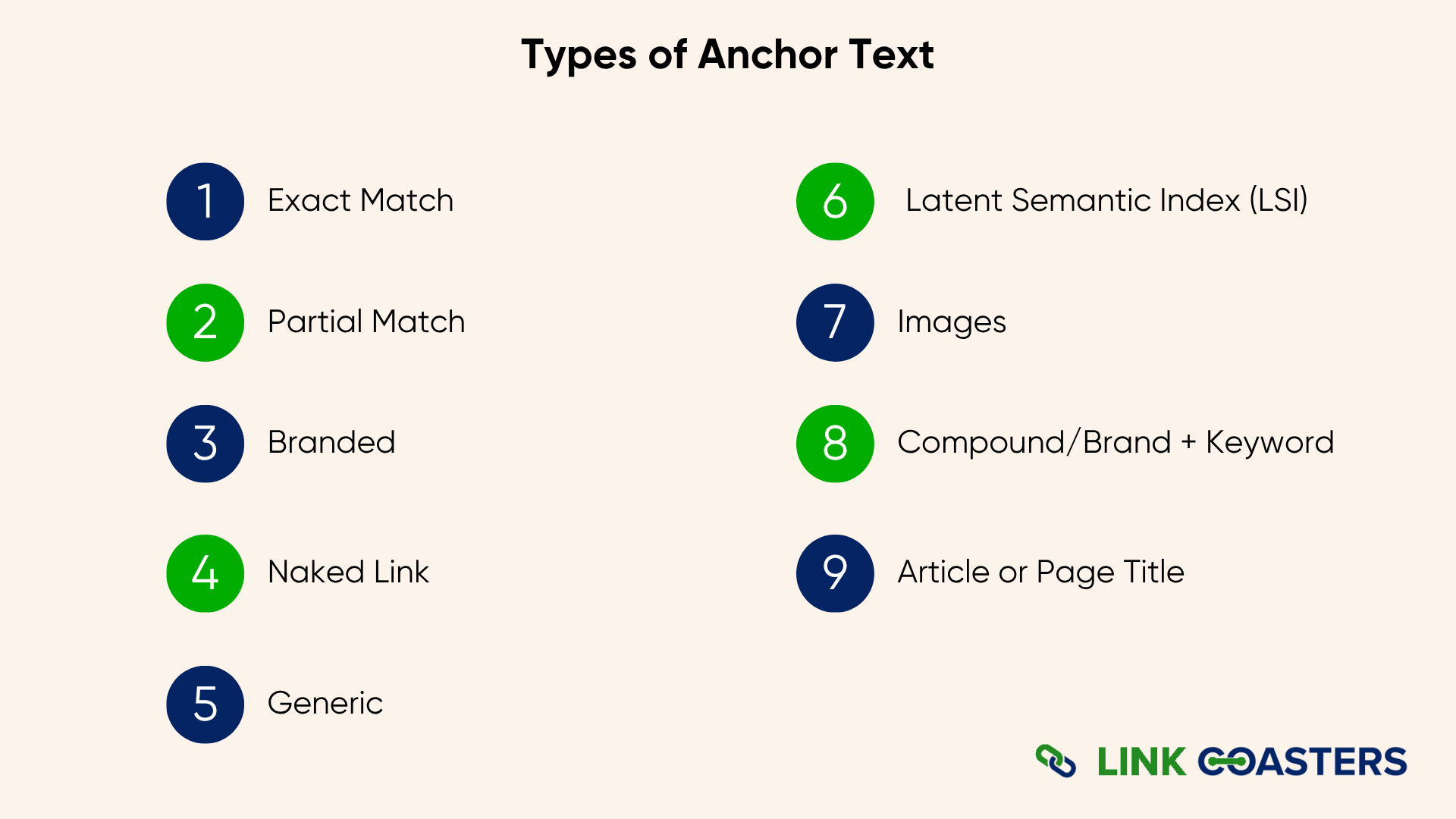
1. Exact Match
An exact match anchor is when your link uses the very exact keyword you want to rank for. For example, if your target keyword is a data analytics course, then that exact phrase would be the anchor text.
Exact match anchors are powerful because they send the clearest possible signal to search engines. They directly connect the keyword to the page, making it obvious what the page is about. The downside is that using them too often looks unnatural.
If Google sees a large number of identical keyword-heavy links, it may assume you’re trying to manipulate rankings. That can trigger penalties or even a manual action.
The Best Approach: Use exact match anchors sparingly, about 5 to 10 percent of your total links. Think of them as seasoning: a little goes a long way.
2. Partial Match
A partial match anchor is a softer, more natural variation of your keyword. Instead of using just SEO tools, you might write the best SEO tools for beginners or a free SEO tools comparison.
Partial match anchors still send relevance signals, but they blend more naturally into your content. Because of that, they’re less risky than exact matches and less likely to raise red flags. They also give you room to vary your wording, which makes your profile look more authentic.
Aim for partial match anchors to make up about 15 to 20 percent of your links. They’re one of the most useful types for balancing keyword targeting with natural linking.
3. Branded
Branded anchors use your company or website name as the link. Examples include Nike, Moz Blog, or Search Engine Journal. You might also see them in forms like Visit HubSpot.
These anchors build brand awareness while looking completely natural. They’re safe, trusted, and unlikely to ever cause over-optimization issues. Branded anchors also strengthen the connection between your name and the keywords or industries you work in.
For a balanced anchor profile, branded links should make up the largest share. This helps your link profile look authentic and safe.
4. Naked Link
A naked link is simply the URL itself used as the anchor, like https://example.com or www.yoursite.com/blog-post.
These anchors are extremely common in real-world linking, especially in directories, citations, or academic references. They don’t provide strong keyword context, but they add to the natural variety of your profile. They also carry no risk of over-optimization since they don’t rely on keywords at all.
Ideally, naked links should make up about 10 to 15 percent of your profile.
5. Generic
Generic anchors use vague, non-descriptive phrases like click here, read more, or this article.
They don’t give search engines much context, but they appear naturally across the web. For instance, a blogger writing a casual article might use click here without thinking about SEO. Because of that, having some generic anchors makes your profile look more organic.
That said, you don’t want to overuse them. Too many generic anchors waste opportunities to reinforce relevance. A safe range is about 10 to 15 percent of your total links.
6. Latent Semantic Index Keywords (LSI)
LSI anchors use synonyms or related terms instead of your exact keyword. If your main keyword is link building, you might use SEO, backlinks, content marketing, off-page SEO, guest posting, anchor text, and digital marketing as anchors.
These anchors help build semantic relevance. They show search engines that your content isn’t only about one narrow phrase but also connected to related topics. This improves your authority and helps you rank for secondary keywords.
Try to keep LSI anchors at about 10 to 15 percent of your profile. They’re especially useful for building breadth in your keyword coverage.
7. Images
Sometimes, the link isn’t text at all—it’s an image. In those cases, the alt text of the image becomes the anchor text.
For example:
<a href="page.html"><img alt="SEO checklist" src="image.jpg"></a>
Here, the SEO checklist is the alt text, so it functions as the anchor.
Image anchors add variety to your profile and also improve accessibility for those users who rely on screen readers.
The best practice is to make alt text descriptive and accurate. It should describe both the image and the linked page. In this way, your anchor text remains useful to both users and search engines.
8. Compound/Brand + Keyword
Compound anchors combine your brand name with a keyword you want to target. For example, phrases like HubSpot marketing software or Nike running shoes mix the strength of a brand with topical relevance.
This type of anchor feels more natural than using just the keyword alone because it mirrors how people talk about products or services in real life. It also builds a strong association between your brand and that keyword, which can pay off in both rankings and brand recognition.
Compound anchors are especially useful when you’re aiming for competitive keywords. This improves your chances of ranking while also improving brand trust. It’s like the right balance between keywords and brand visibility.
9. Article or Page Title
This anchor type uses the exact title of the page you’re linking to. For instance, if you’re referencing a blog post called 10 SaaS Marketing Strategies That Work, you’d use that full title as the link.
These anchors are naturally descriptive, giving both readers and search engines a clear idea of what the page covers. They also feel very natural in editorial contexts, such as blogs, news articles, or resource pages.
Article or page title anchors work especially well for internal linking. When you link to other posts on your site, using the full title sets clear expectations. Readers know exactly what they’ll find, and your site stays organized and easy to explore.
How We Optimize Anchors at Link Coasters
At Link Coasters, we review thousands of anchors each quarter. We track anchor types, placement, and surrounding text. Our audits span brand, partial match, generic, and exact match anchors.
The biggest gains come from clear, descriptive anchors in a matching context. We place links inside body content where nearby sentences reinforce the topic.
We use natural anchors to keep content readable, ensuring that the anchor text aligns with the page context and user intent.
Below are the best practices suggested by Link Coasters for Optimizing Anchor Text.
What Are the Best Practices for Anchor Text Optimization?
1. Stay on Topic and Maintain Relevance
Make sure your anchor text actually matches the page it links to. If it doesn’t, readers get confused, and search engines may see it as spammy behavior.
Before you add a link, ask yourself: Does this anchor text really tell users what they’ll find if they click?
For example, don’t use “best pizza recipes” as anchor text for a page about SEO tools. That just confuses everyone users and Google alike.
Make sure your anchors are relevant to both the page they’re on and the page they link to. This keeps your content logical and user-friendly.
2. Anchor Text Variation and Diversify
Natural websites mix up their anchor text. Don’t use the same phrase over and over.
Prepare a list of related terms and phrases for each target keyword.
For “email marketing,” you might use:
- Email campaigns
- Newsletter marketing
- Marketing emails
- Email strategies
A mix of keywords signals natural use to Google and broadens ranking opportunities.
Keep track of your anchor text usage to maintain a healthy distribution across your link profile.
3. Keep Anchor Text Concise and Descriptive
Good anchor text is short and to the point. People should know where they’re going without reading a long sentence.
Aim for 2-5 words when possible. Longer phrases can work, but they often feel unnatural and are harder to fit smoothly into your content.
Compare these examples:
- Good: “social media marketing guide”
- Poor: “comprehensive step-by-step guide to social media marketing for small businesses”
The first example is clear, concise, and easy to read. The second one feels forced and unnatural.
4. Make Sure Your Links Are Natural
Natural anchor text flows smoothly within your content. It should feel like a natural part of the sentence or paragraph. Read your content out loud. If the anchor text sounds forced or awkward, change it.
Pay attention to the context around your links. The surrounding text should support and make sense with your anchor text choice.
5. Avoid Over-optimization
Over-optimization happens when you use exact match keywords too often. This pattern can trigger penalties from Google.
Aim for 80% branded, generic, or partial match anchors, with 20% focused on keywords.
Check your anchor text distribution regularly. If exact match anchors go over 10-15% of your profile, you may be over-optimized.
6. Leverage Branded Anchor Text
Branded anchors should be the foundation of your link profile. They’re safe and help build your brand authority.
Use variations of your brand name:
- Full company name
- Shortened version
- Website domain
- Brand + descriptor (“Nike shoes,” “Apple products”)
Branded anchors help establish your site as an authority in your industry.
7. Monitor Anchor Text Distribution
It’s not enough to just build links, you also need to keep an eye on the balance of your anchor text. Tools like Ahrefs or SEMrush make this easy by showing you how your anchors are distributed across your entire profile.
A healthy profile usually has a mix of anchor types.
- Most of your links should use your brand name (about 40–50%), since branded anchors look natural and build authority.
- Naked URLs and generic phrases like click here should each sit around 10–15%.
- Partial match anchors (keywords with extra context) often make up 15–20%.
- Finally, exact match anchors should stay low, around 5–10%, to avoid looking spammy. Other variations like LSI terms or image anchors can fill out another 10–15%.
These percentages are only guidelines, not hard rules.
No two industries look exactly the same. What’s important is to mix things up. Repetition looks suspicious, but variety makes your link profile look authentic.
At Link Coasters, we rebaseline anchor text ratios quarterly against your live profile and competitors.
How to Find & Fix Anchor Text Issues
1. Audit Your Anchor Text Profile
Start with a comprehensive audit using SEO tools. Ahrefs, SEMrush, and Moz provide detailed anchor text reports.
Export your backlink data and sort your anchors by type. Look for patterns that seem unnatural or over-optimized.
Pay attention to:
- Anchor text diversity
- Over-optimization patterns
- Irrelevant or spammy anchors
- Broken or redirected links
Write down your findings so you can create an action plan for improvements.
2. Identify Over-Optimized Anchor Text
Over-optimization shows up as excessive exact match usage. If one keyword represents more than 15% of your anchors, you may have a problem.
Look for repetitive patterns where the same anchor text shows up from different sources. This often means artificial link building.
Check for keyword stuffing in your anchor text. Phrases like “best cheap SEO tools for small businesses online” are red flags.
Create a plan to diversify these over-optimized anchors by building new, natural links.
3. Spot Irrelevant or Misleading Anchors
If your anchor text doesn’t match the page it points to, it can create problems for both readers and search engines. Imagine clicking on a link that says best phones but landing on a page about phone cases that’s confusing and frustrating.
Common issues:
- Generic anchors linking to specific product pages
- Keyword anchors that don’t match page content
- Misleading descriptors that set wrong expectations
Examples:
- ❌ Using Click here to link to a product page.
- ❌ Using Cheap gadgets to point to an SEO article.
- ✅ Using Running shoes for beginners to link to your running shoe collection.
- ✅ Using the Complete SEO tools guide to link to a blog post on SEO tools.
Review your top-linked pages and make sure the anchor text accurately represents the content.
4. Check for Repetition and Lack of Variation in Anchor Text
Healthy profiles show anchor text variation. If you see the same phrases over and over, it’s time to mix things up.
Create lists of synonyms for your main keywords. Use tools like LSIGraph or Answer The Public to find related terms. Plan your future content and outreach to include varied anchor text that still supports your SEO goals.
5. Improve Internal Anchor Text Use
One of the easiest places to get anchor text right is inside your own site. Unlike backlinks from other websites, internal links are fully under your control. That means you can be intentional with the words you choose.
Review your internal linking strategy:
- Are you using descriptive anchors for internal links?
- Do internal anchors support your target keywords naturally?
- Are you creating clear site architecture through internal links?
Update your existing content to include better internal anchor text wherever it makes sense.
6. Fix Broken or Redirected Anchor Links
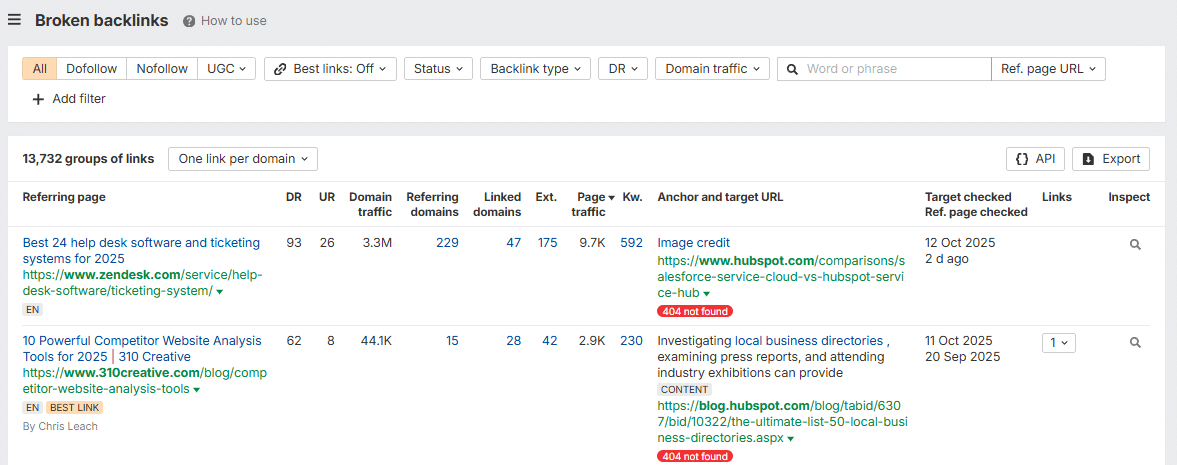
Broken links waste link equity and hurt user experience. Use tools to find broken links across your site.
Check for redirect chains that may dilute link value. Update anchors pointing to redirected URLs when possible.
Set up monitoring to catch new broken links quickly. Most SEO tools offer automated broken link detection.
7. Keep Your Anchor Text Strategy Balanced
Balance comes from mixing different anchor types. Avoid focusing too much on any single type.
Create guidelines for your team about anchor text best practices. Include examples of both good and bad anchor text choices.
Regular reviews help you maintain balance as your link profile grows. Schedule monthly or quarterly anchor text audits.
What Common Mistakes Should You Avoid in Anchor Text Optimization?
Over-optimization of Exact-Match Anchor Text Can Lead to Penalties
The biggest mistake is using exact match keywords too frequently. Google’s algorithms detect unnatural patterns quickly.
Signs of over-optimization:
- Same keyword used in 20%+ of anchors
- Multiple links from the same domain using identical anchors
- Keyword stuffing in anchor text
- Unnatural keyword density in linking content
Recovering from penalties can take months. It’s much better to prevent over-optimization issues in the first place.
Using Generic Anchor Text Excessively
While generic anchors like “click here” are fine in small amounts, overusing them wastes valuable opportunities.
Generic anchors provide no topical signals to search engines. They don’t help with keyword rankings or content understanding.
Aim for descriptive anchors that give both users and search engines useful information about the linked content.
Ignoring Branded and Partial-Match Anchor Texts
Many beginners focus only on exact match keywords. This creates unnatural link profiles and raises red flags with Google.
- Branded anchors should make up the largest portion of your profile. They’re safe, natural, and help build your brand authority.
- Partial match anchors give you keyword relevance while looking more natural than exact matches.
Linking to Low-Quality or Irrelevant Content
Your anchor text won’t help if you’re linking to poor content. Always make sure the page you’re linking to is high quality and relevant.
Before creating any link, evaluate:
- Is the target content valuable and relevant?
- Does it match user expectations set by the anchor text?
- Will users find what they’re looking for?
Quality content attracts natural links with varied anchor text over time. Focus on creating resources people actually want to link to.
Inconsistent Anchor Text for the Same Content
- Using wildly different anchors for the same page can confuse search engines about what that page is really about.
- While variation is good, keep your anchors thematically consistent. If a page is about email marketing, your anchors should support that topic.
- Create anchor text guidelines for each important page. This helps you stay consistent while still allowing for natural variation.
Neglecting Internal Links
Internal linking is completely under your control. Many sites waste this opportunity by using weak or generic anchor text.
Common internal linking mistakes:
- Generic anchors like “read more” for important pages
- Missing internal links to key content
- Over-optimized internal anchor text
- Broken internal links
Develop an internal linking strategy that supports your SEO goals and keeps your anchor text patterns looking natural.
Tools & Resources for Anchor Text Optimization
Ahrefs – Anchor Report
Ahrefs makes it easy to see how your anchor text is being used across your backlink profile. Inside the Site Explorer tool, you can pull up an Anchors report that shows every anchor pointing to your site, along with how often each one appears.
Key features:
- Complete anchor text breakdown by percentage
- Historical anchor text data
- Anchor text comparison with competitors
- Export capabilities for detailed analysis
Use the Anchors report to identify over-optimization issues and track your anchor text distribution over time.
The tool also shows which domains are using specific anchor text, helping you understand your link sources better.
SEMrush – Backlinks Anchor Report
SEMrush offers detailed anchor text analytics in its Backlink Analytics tool.
Features include:
- Anchor text distribution charts
- Branded vs. non-branded anchor breakdown
- Toxic anchor identification
- Competitor anchor text analysis
The tool can also point out anchor text patterns that might look unnatural to Google and put your site at risk. Beyond spotting problems, it’s useful for comparison.
You can line up your anchor text profile against top competitors in your niche and see how yours stacks up. This makes it easy to spot gaps, fix weak spots, and follow strategies that are already working in your industry.
Yoast SEO – Internal Linking Suggestions
Yoast SEO Premium offers internal linking suggestions based on your content.
Benefits:
- Automated internal linking recommendations
- Anchor text suggestions based on content analysis
- Easy implementation within WordPress
- Helps build topical authority through internal links
Yoast is a quick way to optimize your internal anchor text.
Advanced Strategies for Anchor Text Optimization
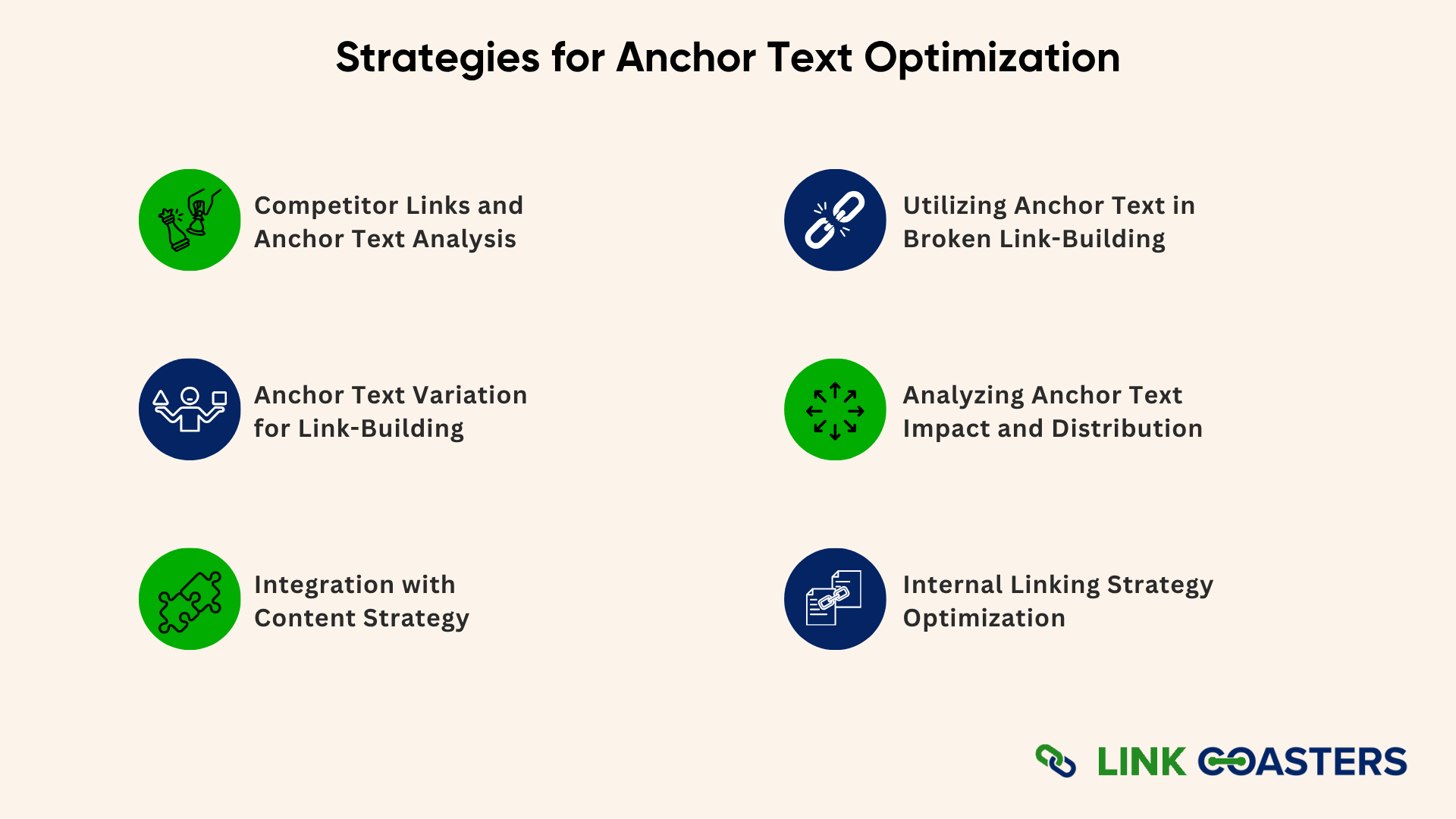
Competitor Links and Anchor Text Analysis
How to Analyze Competitor Anchor Text Profiles
Competitor analysis shows you what anchor text strategies are working in your industry.
Start by identifying your top competitors. Use tools like Ahrefs or SEMrush to check out their backlink profiles.
Look for patterns in their anchor text distribution
- What percentage use branded anchors?
- How do they handle exact match keywords?
- What related terms do they target?
- Which anchor types drive their best rankings?
Export competitor data and create comparison charts. This reveals gaps in your own strategy.
Finding Anchor Text Opportunities
Competitor analysis uncovers anchor text opportunities you might be missing.
Look for:
- Related keywords competitors target that you don’t
- Anchor text variations that perform well
- Safe exact match percentages in your industry
- Branded anchor strategies that build authority
Create a list of anchor text variations based on your competitor research. Use these insights to diversify your own link profile.
Anchor Text Variation for Link-Building
Creating Natural Link Profiles
Natural link profiles develop over time. They show variation in anchor text, linking domains, and link types.
To build a natural link profile:
- Create linkable content that attracts varied anchor text
- Use different anchor text in your own outreach
- Focus on earning links, not just building them
- Monitor and adjust your link profile regularly
Monitor your anchor mix monthly. If it feels unnatural, adjust before it spreads.
Scaling Anchor Text Diversity
The more links you create, the more challenging it gets to keep anchor text looking natural.
Create anchor text templates for different scenarios:
- Guest posting anchors
- Resource page submissions
- Broken link building replacements
- HARO (Help A Reporter Out) responses
Make sure your team knows how to handle anchor text. Don’t just tell them to “use keywords” or “avoid spammy links” give them clear examples of what good and bad anchors look like.
Integration with Content Strategy
Aligning Anchor Text with Content Themes
Your content strategy should support your anchor text goals. Create content that naturally attracts the anchor text you want to see.
Map your target keywords to specific content pieces.
Then create supporting content that links to those pages using natural anchor text.
For example, if you want anchors about “email marketing automation,” create content about:
- Email marketing basics
- Marketing automation tools
- Customer journey mapping
- Lead nurturing strategies
This approach makes anchor text optimization feel natural and easy.
Topic Clustering and Internal Linking
Think of topic clusters as a way to bring order to your content. The pillar page acts as the main subject, and the supporting posts branch out into narrower subtopics, all connected together.
Internal linking is the glue that holds this structure together. By linking your subtopic pages back to the pillar page with clear, varied anchor text, you show search engines how all the pieces fit. Readers also benefit because they can easily navigate through your content without getting lost.
Let’s say you run a blog about SEO. Your pillar page could be The Complete Guide to Link Building. Around it, you’d create supporting posts like How to Find Guest Posting Opportunities, Common Link Building Mistakes to Avoid, and Top Outreach Strategies for 2025. Each of those articles would link back to your pillar with descriptive anchors, such as link building guide or a comprehensive link building resource.
This setup not only makes your content easier to navigate but also signals to search engines that you cover link building in depth. Over time, that topical authority can help your entire site rank higher for competitive SEO keywords.
Utilizing Anchor Text in Broken Link-Building
Finding Broken Link Opportunities
Broken link building gives you the chance to suggest anchor text when you offer a replacement link.
Use tools like Ahrefs or Check My Links to find broken links on relevant websites.
Focus on:
- Resource pages in your industry
- Competitor backlinks that are now broken
- Government and educational sites with outdated links
- Industry associations and directories
Write down the original anchor text used for broken links. This gives you insight into natural anchor patterns.
Crafting Replacement Content
When you’re replacing broken links, the content you provide should feel like a natural fit. If a site is linked to an SEO checklist before, your replacement content should deliver something just as relevant, ideally even better.
Your replacement should:
- Match the topic and depth of the original content
- Fit naturally with the existing anchor text
- Provide equal or better value to users
- Support the overall content theme of the linking page
This approach increases your success rate and helps you build natural anchor text patterns.
Analyzing Anchor Text Impact and Distribution
Measuring Anchor Text Performance
Once you’ve set up a solid anchor text strategy, it’s important to see how it’s working. Pay attention to how different types of anchors, like branded, partial match, or exact match, affect both your rankings and traffic.
For example, a page might climb in search results after you use more partial match anchors, or your branded anchors might drive steady referral traffic.
Look at metrics such as:
- Keyword rankings for pages that use certain anchor patterns
- Increases (or drops) in organic traffic after you tweak anchor text
- Click-through rates on links with different anchor styles
- Conversion rates that come from various anchor sources
Use Google Search Console and Analytics for tracking these results. Together, they’ll show you whether your anchor text changes are improving visibility and engagement.
Optimizing Distribution Ratios
There’s no single “perfect” anchor text distribution strategy because it depends on your niche and how competitive your industry is. Instead, think of the recommended ratios as a starting point. Test them, track the results, and make adjustments as needed.
The best way forward is to document what works specifically for your site. Maybe your industry supports a higher percentage of branded anchors, or maybe related keyword anchors give you better coverage. What matters most is keeping the mix natural.
Avoid making sudden, drastic changes to your anchors. A natural profile develops gradually over time, and sharp shifts can look manipulative to search engines. Steady adjustments, guided by real performance data, are always the safer path.
Internal Linking Strategy Optimization
Building Topic Authority Through Internal Links
Internal linking shows Google you know your stuff. Start with a main pillar page and connect related posts back to it with clear, varied anchors.
For example, a Digital Marketing Guide could link to posts on SEO, PPC, and social media. This setup builds authority and keeps your anchor text profile natural.
Anchor Text for Site Architecture
Internal anchors also shape your site’s structure. Use consistent, descriptive text in menus, categories, and breadcrumbs. It makes it easier for both users and search engines to understand how your site is organized.
Conclusion
Optimizing anchor text is still essential for SEO in 2025. The main goal is to find the right balance between smart optimization and keeping your links natural.
Focus on building a varied anchor text profile that helps both users and search engines. Don’t over-optimize, and always make sure your anchor text is clear and useful.
If you want expert hands on your anchor mix, Link Coasters can help. We secure contextual placements on real, relevant sites and maintain your anchor profile as natural, compliant, and resilient as possible, allowing rankings to grow without raising red flags.
Good anchor text starts with strong content. If you create resources people want to link to, the right anchor text will usually follow naturally.
Keep your anchor text strategy effective by checking and adjusting it regularly. Use the tools and tips in this guide to build a plan that lasts.
Above all, focus on user experience. If your anchor text is helpful for users, it will almost always work well for search engines too.
Key Takeaways
- Diversify your anchor text profile and use branded anchors for 40-50% of your links as the foundation.
- Keep exact match anchors under 10-15% to avoid over-optimization penalties from Google.
- Use descriptive, concise anchor text that accurately tells users what they’ll find on the linked page.
- Monitor your anchor text distribution regularly using SEO tools like Ahrefs or SEMrush.
- Create natural linking patterns by publishing quality content and doing strategic outreach.
- Focus on user experience first. The SEO benefits will follow naturally.
Action Steps
- Audit your current anchor text profile using Ahrefs, SEMrush, or similar SEO tools.
- Identify any over-optimization issues and create a plan to diversify your anchor text.
- Create anchor text guidelines for your team using the best practices in this guide.
- Develop content that’s designed to attract natural, varied anchor text
- Set up monthly monitoring to track your anchor text distribution and performance
- Build relationships with other websites in your industry to create natural link opportunities
FAQs
Anchor text is simply the clickable part of a link. It’s the text you see (usually in a different color) that takes you to another page when you click it.
Example: In <a href=”linkcoasters.com”>SEO Guide</a>, “SEO Guide” is the anchor text.
It signals the topic of the linked page and guides both users and search engines.
It improves rankings, increases relevance, enhances user experience, and boosts CTR.
Nofollow anchors pass minimal SEO value but still drive traffic and branding.
A healthy profile mixes exact, partial, branded, and generic anchors for balance.
Diversify anchors, avoid overuse of exact match, and align with page content.

